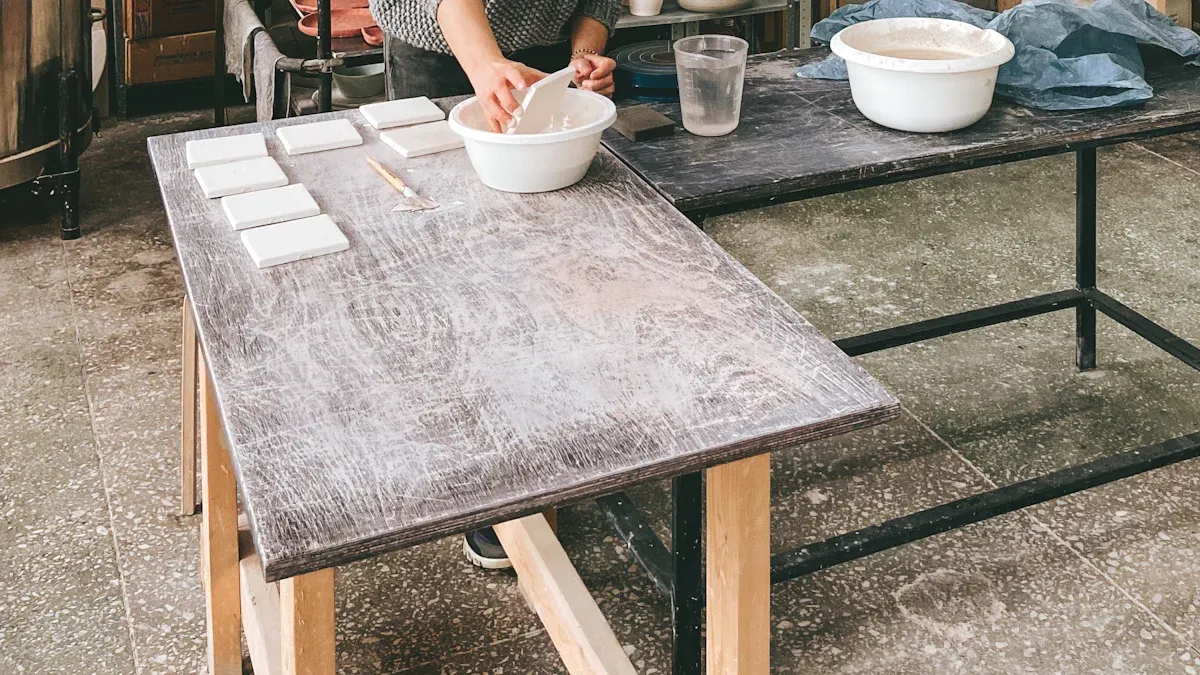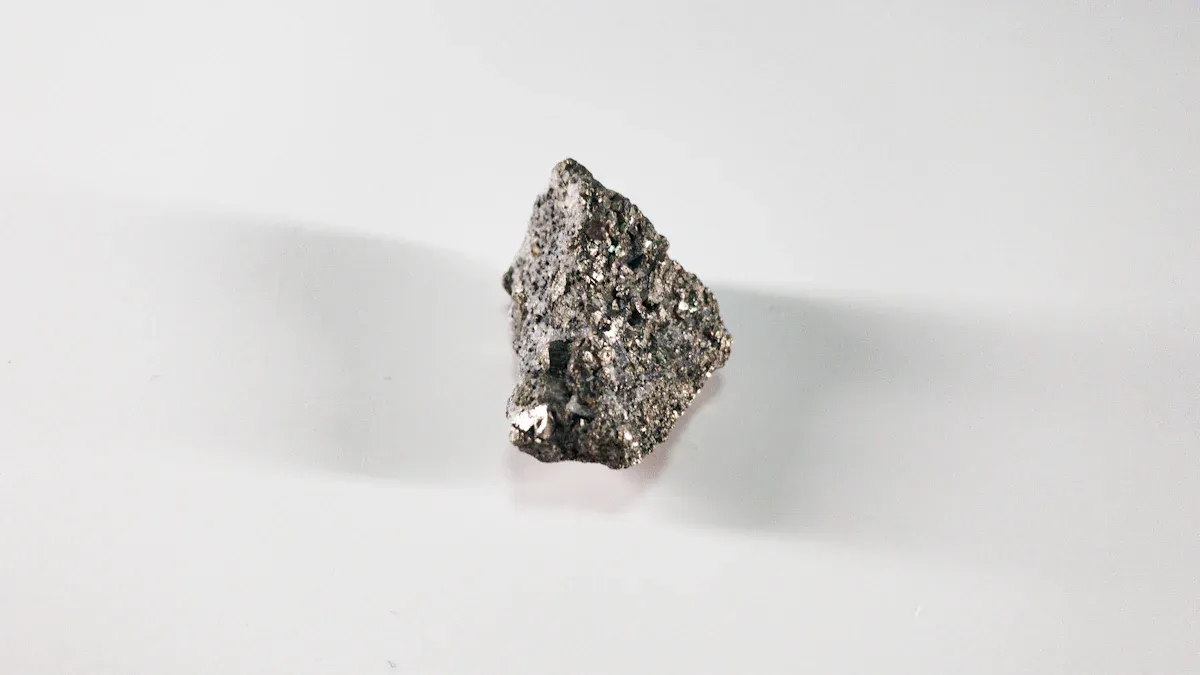
When you choose a silicon carbide plate for ceramic sintering, focus on five key factors. Material purity, density, mechanical strength, thermal shock resistance, and dimensional accuracy all shape how well your plate performs. Careful checks help you avoid failures and ensure reliable results every time.
Key Takeaways
- Choose silicon carbide plates with high purity, density, and mechanical strength to ensure durability and better sintering results.
- Inspect plates carefully for cracks, rough spots, and dimensional accuracy before use to avoid defects and failures.
- Always request test reports, certifications, and clear answers from suppliers to confirm quality and make informed purchasing decisions.
Key Quality Indicators for Silicon Carbide Plate

Material Purity and Composition
You should always check the purity of the material in your silicon carbide plate. High purity means fewer unwanted elements. These elements can cause problems during sintering. Pure silicon carbide helps you get better results and longer plate life. Ask your supplier for details about the chemical composition. You can also request a certificate of analysis. This document shows the exact makeup of the plate.
Tip: Plates with high purity (over 99%) work best for advanced ceramics.
Density and Porosity
Density tells you how tightly packed the material is. High density in a silicon carbide plate means fewer air pockets. Low porosity helps the plate resist cracking and breaking. You can check density by asking for test results or using a simple water displacement test.
| Property | High-Quality Plate | Low-Quality Plate |
|---|---|---|
| Density | High | Low |
| Porosity | Low | High |
Choose plates with high density and low porosity for the best performance.
Mechanical Strength and Hardness
You need a plate that can handle heavy loads and resist wear. Mechanical strength shows how much force the plate can take before breaking. Hardness tells you how well the plate resists scratches and dents. A strong silicon carbide plate will not bend or crack easily during sintering. Always ask for test data on flexural strength and hardness.
Thermal Shock and Oxidation Resistance
Ceramic sintering uses high temperatures. Your plate must handle quick changes in heat without breaking. This is called thermal shock resistance. Good silicon carbide plates can go from hot to cold many times without damage. Oxidation resistance is also important. It helps the plate last longer in air or oxygen-rich environments.
Note: Plates with good thermal shock and oxidation resistance save you money by lasting longer.
Dimensional Accuracy and Surface Quality
You want your silicon carbide plate to have the right size and shape. Dimensional accuracy means the plate matches the measurements you need. Surface quality affects how your ceramics sit on the plate. Smooth, flat surfaces help prevent defects in your products. Always check the plate for chips, cracks, or rough spots before use.
Testing and Inspection Methods for Silicon Carbide Plate

Visual and Surface Inspection
Start by looking closely at each plate. You can spot many problems with your eyes. Check for chips, cracks, or uneven surfaces. Run your hand over the plate to feel for rough spots or bumps. Use a ruler or caliper to measure the thickness and length. Make sure the plate matches your size needs. If you see any marks or stains, ask your supplier about them. Sometimes, these marks show deeper problems inside the plate.
Tip: Good plates look smooth and even. They do not have sharp edges or visible cracks.
Laboratory Testing (Hardness, Flexural Strength, Thermal Conductivity)
You should ask for lab test results before you buy. These tests show how strong and tough the plate is. Hardness tests tell you how well the plate resists scratches. Flexural strength tests show how much weight the plate can hold before it breaks. Thermal conductivity tests measure how well heat moves through the plate. These numbers help you compare different plates and pick the best one for your needs.
| Test Type | What It Shows |
|---|---|
| Hardness | Scratch resistance |
| Flexural Strength | Load-bearing ability |
| Thermal Conductivity | Heat transfer performance |
Certification, Standards, and Microstructural Analysis
Always ask for certificates from your supplier. These documents prove the plate meets industry standards. Look for ISO or ASTM certifications. You can also request a microstructural analysis. This test uses a microscope to check the inside of the plate. It shows if the grains are packed tightly and if there are any hidden cracks. When you follow these steps, you make sure your silicon carbide plate will work well in your process.
Practical Tips for Evaluating Silicon Carbide Plate
Questions to Ask Suppliers
When you talk to suppliers, you need clear answers. Here are some important questions to ask:
- What is the purity level of the silicon carbide plate?
- Can you provide test reports for density, strength, and thermal shock resistance?
- Do you have certificates that show your plates meet industry standards?
- How do you control quality during production?
- What is your process for handling defects or returns?
Tip: Always ask for a sample or a small order first. This helps you check quality before making a big purchase.
Common Red Flags and Issues
You should watch for warning signs when you inspect plates or talk to suppliers. Some common red flags include:
- Plates with visible cracks, chips, or rough surfaces
- Missing or incomplete test reports
- Suppliers who avoid answering your questions
- Inconsistent plate sizes or shapes
- No clear warranty or return policy
If you notice any of these issues, you may want to look for another supplier.
Comparing Different Products
You can compare products by making a simple table. List the key features for each plate. For example:
| Feature | Plate A | Plate B |
|---|---|---|
| Purity (%) | 99 | 97 |
| Density (g/cm³) | 3.1 | 2.9 |
| Flexural Strength | High | Medium |
| Surface Quality | Smooth | Rough |
This table helps you see which silicon carbide plate meets your needs best. You can make a smart choice by comparing facts, not just price.
You can choose the best silicon carbide plate by following a few simple steps:
- Check material purity, density, and strength.
- Inspect for cracks or rough spots.
- Ask for test reports and certificates.
Careful testing and supplier checks help you get reliable results every time.
FAQ
What is the main benefit of using high-purity silicon carbide plates?
You get better performance and longer plate life. High-purity plates reduce the risk of contamination during ceramic sintering.
How do you check if a plate has good thermal shock resistance?
Ask your supplier for test results. Good plates handle quick temperature changes without cracking or breaking.
Can you reuse silicon carbide setter plates?
Yes, you can reuse them if they show no cracks or damage. Always inspect each plate before every use.


